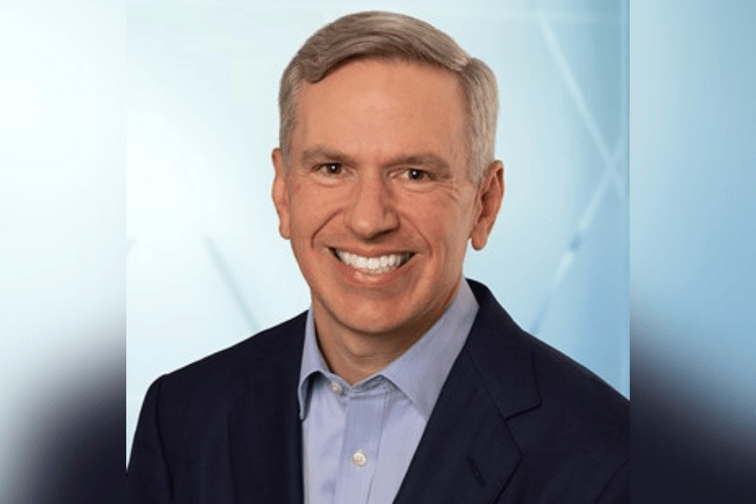

Earlier this year, in conversation with Insurance Business UK, the incoming Verisk CEO Lee Shavel (pictured) revealed how he came to join the business and his leadership plans – and yesterday he formally stepped into his new role.
Read more: Incoming Verisk CEO shares his plans
There’s a clear throughline to his ambitions for the innovation-led group – that of capitalising on the opportunities afforded by the insurance industry confronting the move to a digital-first society. It’s an external drive propelled by several areas of focus– including Verisk’s acquisition and investment activity, and the continued expansion of its European operations.
Exploring what this growth will look like, Shavel highlighted the plethora of opportunities available within insurance, especially in the insurtech space at this time. Ecosystem is an overused word, he said, but it describes the environment of the insurance industry – and rationalises the need to find new ways to apply technology and build strong relationships that benefit the whole value chain.
“In the United States that approach emanates from our original utility model,” he said. “[In Europe] it’s difficult to create a network of insurance companies in a similar fashion to that consortium type of model that exists in the US. It’s not impossible, and we do occasionally find opportunities to partner with insurance companies in the UK and other areas. But the more effective means to do that is by looking at software companies in the insurance space that are effectively networks of participating insurers.”
For example, Verisk has a business called Validus that is involved in the motor subrogation space, resolving auto claims between the various carriers that insure either party involved in that. That effectively is a network, he said, and it enables Verisk to substantiate and enhance that network by gathering data that it can then use to better inform decision-making and find new ways of creating value.
“We also made an acquisition which I think is one of our most exciting ones of a company called Sequel [now Verisk],” he said. “They developed a workflow software platform that serves the non-standard liability market, effectively the Lloyds market here in London. It started as a policy management software but we have been able to add a ratings engine to that through another acquisition as well as other analytics components that further improve it.
“So we are building out similar networks that serve to create more value for the participants in that network, which is economically a similar model to what we have done in the US.”
So the first dimension of the group’s acquisition strategy across the international markets it serves, Shavel said, while the second focuses on looking at elements of new data analytics or processes businesses that it knows are additive to the insurance industry. The strength of Verisk’s model is that it has the ability through its network, datasets or technology to accelerate the adoption of these – and thus create new innovation for the market.
Verisk’s M&A pipeline is very deliberate and considered, he noted because it operates on multiple fronts – international expansion, functional expansion and a philosophical approach to the role of dealmaking in creating value by leveraging and strengthening existing platforms.
“By making these acquisitions, we're creating value by leveraging the platform that we have at Verisk, either in terms of our customer network or our technological capabilities,” he said. “We want to avoid approaching M&A purely from the portfolio standpoint of ‘boy, this is a great business and we need to own it’. There has to be an active engagement from our business on how we create value and drive value to the industry.”
Read more: British insurtech gets snapped up by Verisk
Running alongside this inorganic growth approach is Verisk’s ongoing dedication to the expansion of its operations in the EU and Shavel stated the team is “really thrilled” by what it has accomplished so far. The group decided to focus on the UK as a starting point due to a range of factors, including accessibility and language. It started that approach by acquiring a portfolio of businesses that didn't necessarily have connectivity but which went a long way to establishing its foothold and presence in the market.”
“At the stage that we're at now, we really believe we have critical mass, where we can begin to see some of the integration of those datasets and those products in what we would refer to as ‘One Verisk’,” he said. “That’s where the client understands that we are not a single-point solution or a collection of single-point solutions, but that we are looking for ways to tie those together to meet their needs in that local market.”
That’s where Verisk is now, he said, at the jumping-off point of being able to substantial a true, international Verisk that is focused on those specific needs. Acquisitions will continue to be a part of that, and the group recently acquired the German company ACTINEO which represents its first foray into the German market. It’s the next step in a geographic expansion that will spread across Europe.
“We'll look to build from that,” he said. “But I think the focus is now shifting from that product solution approach to a much more holistic client orientation around how we can meet the needs of European and broadly international insurers. It’s an area where there aren’t as well-established, industry-wide data providers that can tailor their products to meet the local needs of those companies.
“I think it’s a very exciting opportunity. And I'm planning on spending a significant amount of my time here [in Europe] because that will be a large contributor to the overall growth of our business.”
